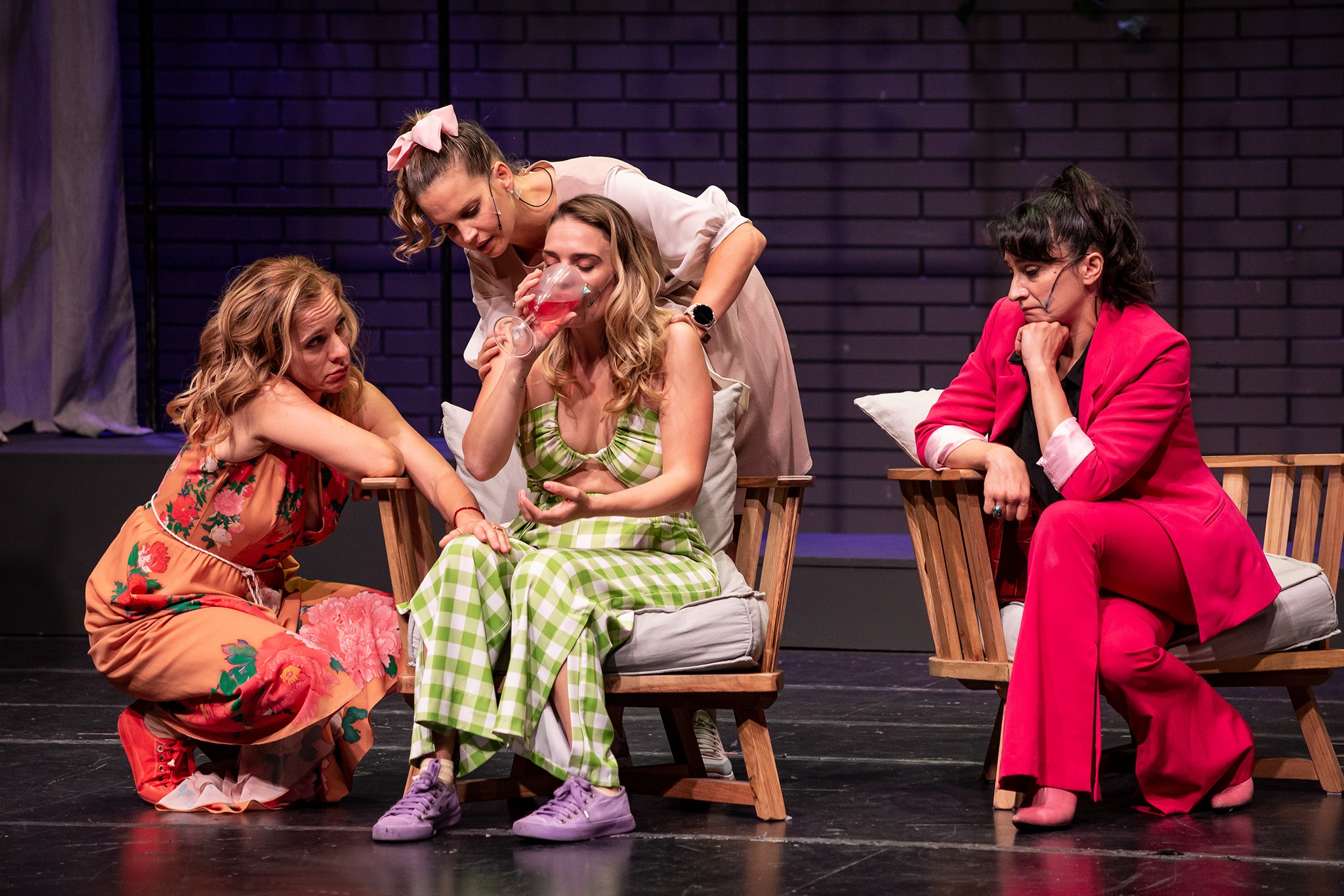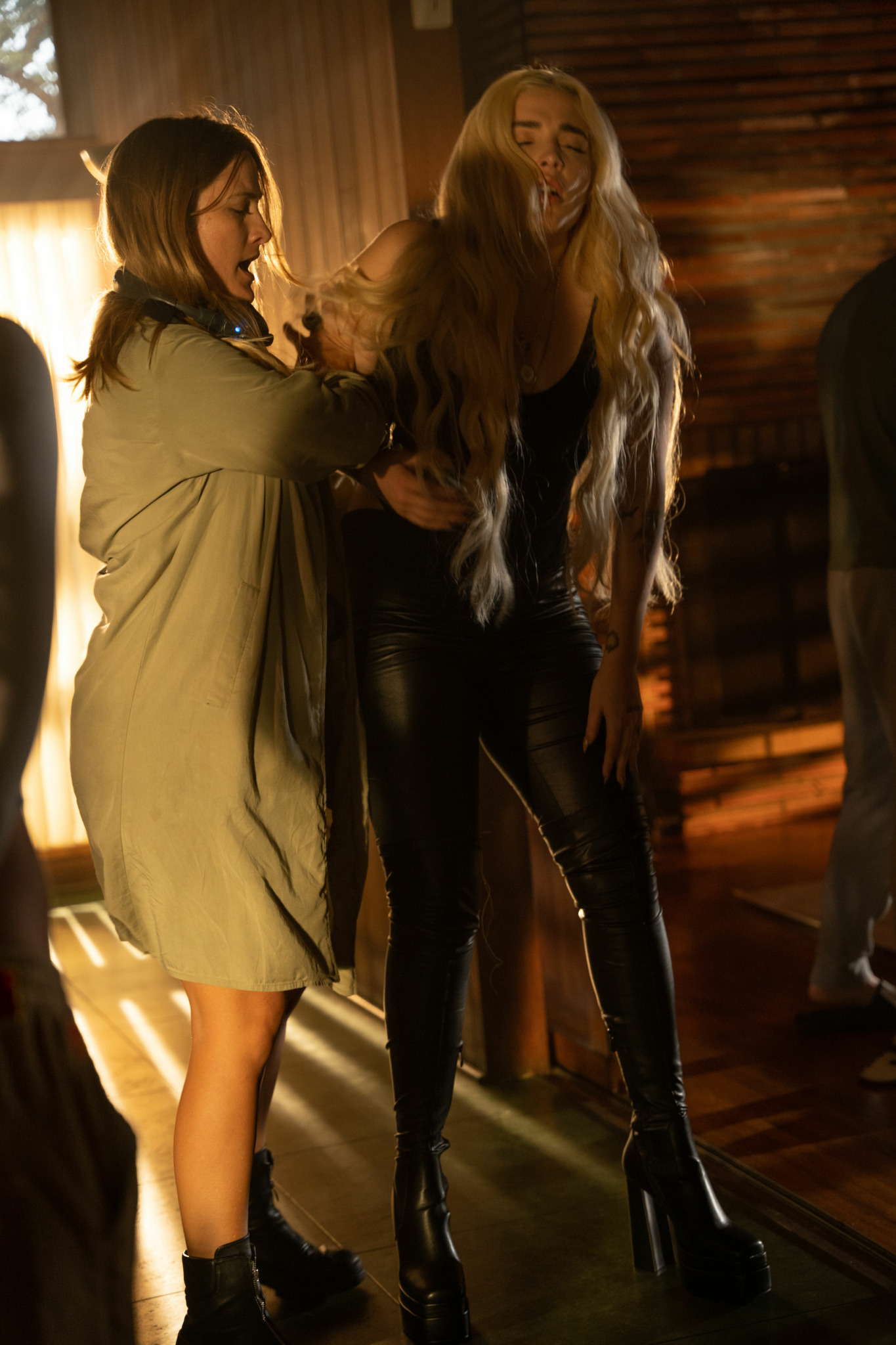We recently connected with Josefina Pieres and have shared our conversation below.
Hi Josefina, thanks for joining us today. Can you talk to us about a project that’s meant a lot to you?
As a director, my role is to bring a unique vision to each project—and for me, that means becoming deeply involved, both creatively and emotionally. It’s hard for me to make a project meaningless, because I naturally pour myself into the process. However, a few have stood out as truly transformative.
The first crucial project for me was “A Puerta Cerrada” (Huis Clos of Jean Paul Sartre), directed by Serge Nicolai from Théâtre du Soleil, where I performed as Estelle Rigault. That experience changed my life. Serge taught me what life in the theatre really meant: the hard work, the deep dedication, and the endless search for truth in every movement, word, and silence. It wasn’t just a production—it was a masterclass in artistic rigor and vulnerability that continues to shape how I approach storytelling today.
Whe. I started my career as an advertising director, an important milestone was a campaign I directed for Garnier titled “Nutri tu vida de color.” It was incredibly meaningful because it marked the moment I could fully present myself as an actor-director within the world of advertising. I was able to apply my performance sensibility to a commercial format, working closely with talent to shape nuanced, expressive moments within a branded context. It opened up a new path for me—one where storytelling, artistry, and strategy could meet.
As a theatre director, one of my most significant projects was “Madres”—my first commercial stage production with celebrity actors. The team was entirely made up of women and almost all of whom were mothers. It was a deeply personal experience where I was able to bring my vision to life as both a director and a mother. The show created space for honest and fun conversations about motherhood, identity, and strength, both onstage and behind the scenes.
Last year I had the opportunity to direct “Así lo decimos”, a comedy series created for WhatsApp and shot in Mexico. This was enormously meaningful for me because it was the first time I could fully merge my two creative worlds: theatre and advertising. This live show used humor and cultural insight to explore how we communicate, and I worked with actors in a way that felt both theatrical and contemporary. Being on stage directing a live show with audience for an advertising structure was a dream job.
And now, I’m in pre-production for one of the most meaningful projects of my career: the short film “Two Tears”, which I wrote and which was selected as the winner of the 2025 Miami Beach Made Film Contest. This project marks an important step in my journey into the narrative and film industry. “Two Tears” explores childhood, friendship, emotional discovery, and the magic of belief through a deeply poetic lens, and I’m excited to bring it to life in my city with the support of a community that believes in storytelling as much as I do.
Each of these projects, and many others, has challenged me, shaped me, and reminded me why I tell stories—to connect, to transform, and to stay true.


Josefina, before we move on to more of these sorts of questions, can you take some time to bring our readers up to speed on you and what you do?
My name is Josefina Pieres, and I’m a director, storyteller, and creative producer working at the intersection of theater, film, and advertising. I was born in Argentina and have been based in Miami for several years, where I’ve developed a multidisciplinary career that spans stage, screen, and branded content.
My journey into this world began through acting. I trained in Buenos Aires and later in Europe, where I had the life-changing opportunity to work under Serge Nicolai of Théâtre du Soleil. That experience—where I played Estelle in A Puerta Cerrada—taught me the discipline, truth-seeking, and depth required to truly live a story rather than just perform it. From there, my love for storytelling expanded, and I realized that my passion was not just in interpreting characters, but in shaping the entire vision behind a piece of work.
Today, I direct and develop creative works across several mediums. In theater, I co-founded Simbios Art Corp, a non-profit where we create original plays and adaptations, often focused on women’s voices and emotionally resonant narratives. In advertising, I specialize in actor direction and crafting content that feels authentic and grounded—even in commercial formats. I’ve directed campaigns for brands like Garnier, UHC, PepsiCo, Changan, Mercado Libre, Color Centro, Epson, WhatsApp. I have directed interviews for brands like Meta and Vanity Fair with artists like Bad Bunny, Fonseca, Shakira, Mau y Ricky, Sofia Reyes, Thalia, between others.
What sets me apart is my ability to bring cinematic and theatrical depth into every project—whether it’s a short film, a social media campaign, a music video or a stage performance. I care deeply about emotional truth, and I believe that even the most lighthearted content should connect with audiences on a genuine human level. My background in acting makes me a director who communicates closely with talent, helping them discover emotional nuance, while my experience as a producer ensures that I deliver projects that are not only beautiful but also efficient and on-brand.
One of my most meaningful recent ventures is Women in Theatre, a Miami-based initiative I lead through Simbios Art Corp, that elevates women-identifying creators across the stage and screen. We host panels, workshops, and collaborations with organizations like the Koubek Center, and it’s been incredibly rewarding to foster community through shared knowledge and artistic exchange.
Currently, I’m in pre-production for a short film I wrote called Two Tears, which was selected as the winner of the 2025 Miami Beach Made Film Contest. This project feels like the culmination of so many parts of my journey—it combines poetic storytelling, performance, and a meaningful message about childhood, emotion, and the transformative power of art. It also marks a significant step for me into the narrative film industry, and I couldn’t be more excited.
If there’s one thing I want people to know about me and my work, it’s that I lead with emotion, integrity, and vision. Whether I’m directing a play, shooting a campaign, or mentoring young creatives, I approach everything with care, collaboration, and curiosity. I believe in telling stories that move people—and in building creative processes that are as meaningful as the final result.


What’s the most rewarding aspect of being a creative in your experience?
For me, the most rewarding aspect of being an artist is the ability to create emotional connections that transcend language, background, and circumstance. As a director and storyteller, I get to craft moments that make people feel seen, understood, or simply moved—whether it’s through a line of dialogue, a look between characters, or a visual metaphor. There’s a kind of magic in watching an audience react in real time, or knowing that something you created resonated with someone deeply—even if you’ll never meet them.
On a personal level, being a creative allows me to explore and process the world around me. Each project becomes a dialogue between my inner world and the outside one. It’s a space where I can express vulnerability, curiosity, and imagination with purpose.
But perhaps most fulfilling of all is the collaboration—working with actors, writers, designers, and producers to bring something into existence that none of us could have created alone. That shared sense of purpose, the alchemy of many voices shaping one story, is what keeps me coming back to the work again and again.


Looking back, are there any resources you wish you knew about earlier in your creative journey?
One of the biggest ones is pitch development. Understanding how to clearly and powerfully communicate an idea—visually, emotionally, and strategically—is a skill I had to learn over time. It’s not just about having a great concept; it’s about knowing how to package it in a way that resonates with others, whether you’re pitching to a brand, a theater, a film fund, or a collaborator. I wish I had explored the structure of a good pitch deck, how to shape a compelling narrative around a project, and how to tailor that message for different audiences much earlier.
Another important resource is the art of finding the right references. Early on, I’d often gather moodboards or visuals that I liked, but not necessarily ones that aligned with the specific story I was trying to tell. Now I understand how powerful and generative this process can be. It’s become one of the most powerful creative channels for me—because in the act of searching, my project is still open for creative expansion. It’s like the project is still listening, still breathing, and I can stumble upon a color palette, a piece of music, or a scene from another medium that suddenly unlocks a deeper layer of meaning or direction I hadn’t seen before.
And finally, I wish I had embraced the non-working moments as part of the creative process. I used to feel anxious during quiet periods between jobs or productions. But now I see those pauses as essential. They’re where observation, inspiration, and inner clarity emerge. They’re where your voice strengthens. Giving myself permission to use those moments for rest, exploration, or even playful experimentation has been transformative—those spaces are often where my best ideas are born.
Contact Info:
- Website: https://josefinapieres.com
- Instagram: https://www.instagram.com/josefinapieres/
- Linkedin: https://www.linkedin.com/in/josefina-pieres/




